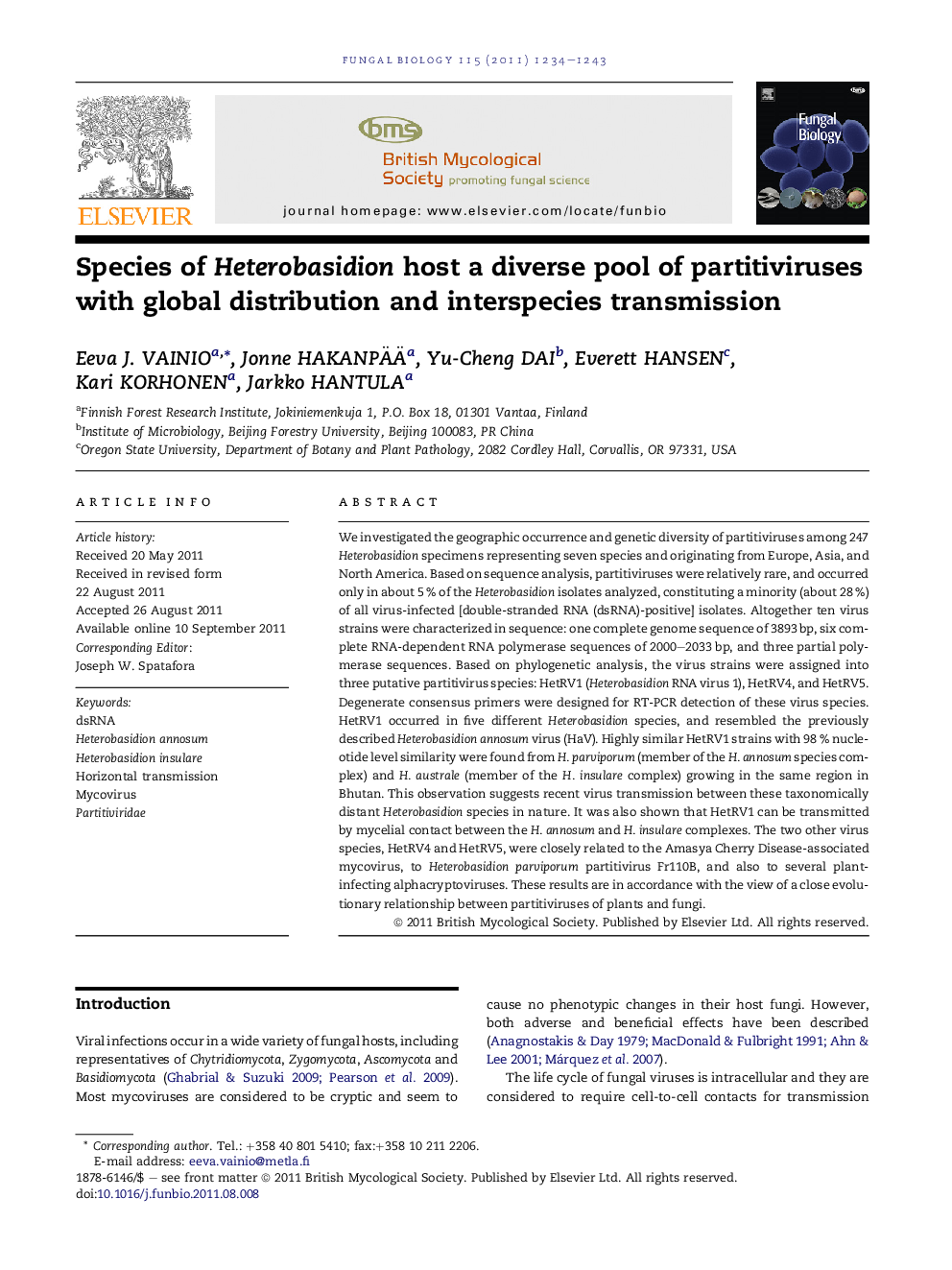| کد مقاله | کد نشریه | سال انتشار | مقاله انگلیسی | نسخه تمام متن |
|---|---|---|---|---|
| 4357312 | 1300051 | 2011 | 10 صفحه PDF | دانلود رایگان |

We investigated the geographic occurrence and genetic diversity of partitiviruses among 247 Heterobasidion specimens representing seven species and originating from Europe, Asia, and North America. Based on sequence analysis, partitiviruses were relatively rare, and occurred only in about 5 % of the Heterobasidion isolates analyzed, constituting a minority (about 28 %) of all virus-infected [double-stranded RNA (dsRNA)-positive] isolates. Altogether ten virus strains were characterized in sequence: one complete genome sequence of 3893 bp, six complete RNA-dependent RNA polymerase sequences of 2000–2033 bp, and three partial polymerase sequences. Based on phylogenetic analysis, the virus strains were assigned into three putative partitivirus species: HetRV1 (Heterobasidion RNA virus 1), HetRV4, and HetRV5. Degenerate consensus primers were designed for RT-PCR detection of these virus species. HetRV1 occurred in five different Heterobasidion species, and resembled the previously described Heterobasidion annosum virus (HaV). Highly similar HetRV1 strains with 98 % nucleotide level similarity were found from H. parviporum (member of the H. annosum species complex) and H. australe (member of the H. insulare complex) growing in the same region in Bhutan. This observation suggests recent virus transmission between these taxonomically distant Heterobasidion species in nature. It was also shown that HetRV1 can be transmitted by mycelial contact between the H. annosum and H. insulare complexes. The two other virus species, HetRV4 and HetRV5, were closely related to the Amasya Cherry Disease-associated mycovirus, to Heterobasidion parviporum partitivirus Fr110B, and also to several plant-infecting alphacryptoviruses. These results are in accordance with the view of a close evolutionary relationship between partitiviruses of plants and fungi.
► We investigated global occurrence of partitiviruses among 247 Heterobasidion specimens.
► Ten putative virus strains were characterized in sequence.
► The viruses were assigned to three species: HetRV1 (Heterobasidion RNA virus 1), HetRV4 and HetRV5.
► Highly similar virus strains were found from H. parviporum and H. australe.
Journal: Fungal Biology - Volume 115, Issue 12, December 2011, Pages 1234–1243